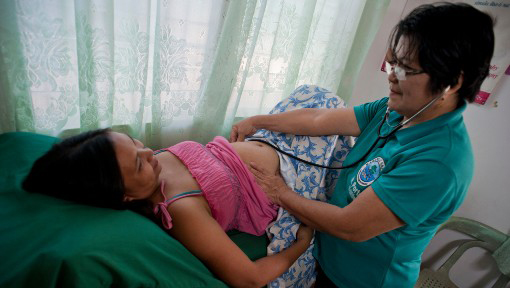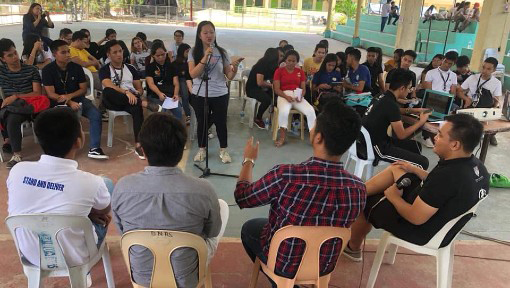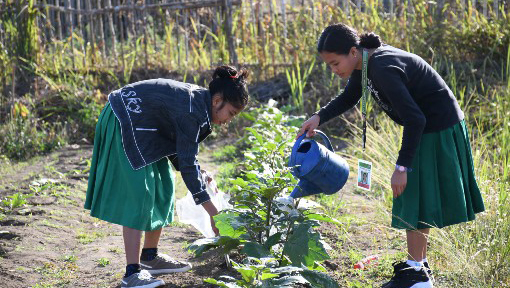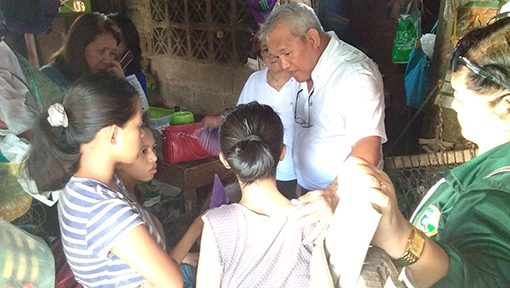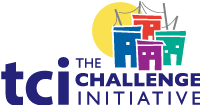Philippines Toolkit: AYSRH Advocacy
- Home
- Help and Support
- Close
- Toolkits
- Global Toolkit
- AYSRH Toolkit
- Hub Toolkits
- Core High-Impact Practices
- Gender Essentials Mini Course
- Close
- Resource Collection
- Community of Practice
- Coaching
- Log In/Register
- My Profile
- English
Information and Service Delivery Network for Adolescent Health and Development
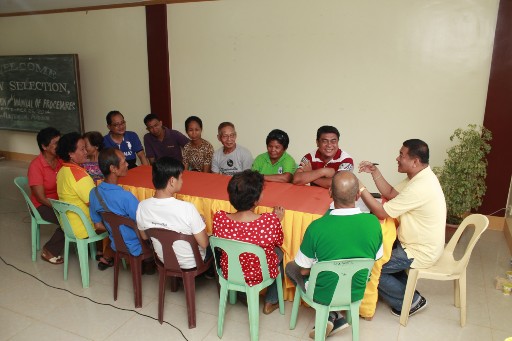 The complex and multifaceted nature of adolescent health and development (AHD) issues requires the need for a multi-sectoral and inter-agency approach in dealing with them. For example, teenage pregnancy is not only a health concern to be addressed by health offices, but also requires interventions from other institutions. In the Philippines, there are a number of institutions, including government, civil society organizations (CSOs) and schools, that implement different AHD interventions. However, these interventions are limited in terms of coverage, resources and content. Furthermore, they are not effectively integrated and harmonized because often they are being pursued independently.
The complex and multifaceted nature of adolescent health and development (AHD) issues requires the need for a multi-sectoral and inter-agency approach in dealing with them. For example, teenage pregnancy is not only a health concern to be addressed by health offices, but also requires interventions from other institutions. In the Philippines, there are a number of institutions, including government, civil society organizations (CSOs) and schools, that implement different AHD interventions. However, these interventions are limited in terms of coverage, resources and content. Furthermore, they are not effectively integrated and harmonized because often they are being pursued independently.
Within this context, the Commission on Population and Development (POPCOM) has promoted the establishment of the Information and Service Delivery Network for Adolescent Health and Development (ISDN4AHD) to harmonize existing information and service interventions at the local level. The ISDN4AHD (shortened to ISDN) refers to the network of facilities, institutions and service providers within the provincial, district and municipal/city health and social systems, providing information, training and core service packages of health and social care for adolescents in an integrated and coordinated manner. It is a coordinative and collaborative mechanism for facilitating a harmonized and complementary set of interventions from different stakeholders in a locality. At its core is a referral system that links key actions and services among the members of the ISDN to ensure the continuum of information, care and services needed by adolescents in the ISDN area.
| What information and services are provided? |
|
What are the benefits of ISDN?
- Promotes collaboration, accountability and ownership among key stakeholders from various sectors
- Enables pooling and sharing of resources, particularly at the local level, to ensure greater efficiency and effectiveness of AHD interventions
- Ensures a more comprehensive and holistic response to young people’s health and development needs in terms of continuum of services through a referral system
- Improves young people’s access to appropriate and desired information and services
- Creates an enabling environment where young people are capacitated and empowered to achieve their potential
How to implement
The following steps can be taken by health and population workers, policymakers, program and project managers working on AHD and other stakeholders interested in setting up an ISDN.
Step 1: Organize and hold a 1- to 2-day consultation workshop with all AHD stakeholders
The consultation workshop can be organized or coordinated by the office in-charge of AHD initiatives in the locality (e.g. local population or health office; Sanggunian Kabataan; etc.). The organizer may also partner with other local or regional offices (e.g. POPCOM, DOH, NYC) particularly for technical assistance (e.g. facilitation and processing of the workshop outputs). This would be a good opportunity to invite SBC implementers as well.
The organizer should invite all offices and agencies that are providing a variety of information and services or programs for adolescents within the locality. This may include:
- Local Health Office (representative from the Mayor or Vice Mayor’s office or the Councilor for Health)
- Local Population Office, the AHD, nutrition, mental and oral health coordinators and representatives of hospitals (as end-referral facilities)
- All local agencies with programs for adolescents, including Local Social Welfare and Development Office, PNP for violence in children and PESO for employment
- Sangguniang Kabataan or head of local youth development office (LYDO)
- Relevant CSOs operating with the ISDN area
- Relevant private companies
- Local Department of Education or representatives from schools from both public and private
- Development partners
- Public and private health facilities, including pharmacies
- Other institutions or organizations providing information and services to adolescents in relation to the needs identified by the ISDN
| TIP: Orientation for regional partner agencies (e.g. Department of Health (DOH), POPCOM, Department of Social and Welfare Development (DSWD), National Youth Commission (NYC), Department of Labor and Employment (DOLE), Technical Education and Skills Development Authority (TESDA), etc.) can be done in a separate meeting or during board meetings. |
Since some of the LGUs have limited resources, e.g., mental health facilities, all LGUs should be informed that the ISDN would include resource-sharing among nearby LGUs. The number of participants may depend on the available resources of the organizer/s, ensuring that agencies within the locality that can respond to the major thematic concerns (e.g. teenage pregnancy, employment, out-of-school youth (OSY), etc.) of adolescents, are represented in the meeting.
The consultation workshop provides the venue for reviewing existing data and identifying key issues and causal factors affecting the concerns regarding adolescents within the locality. It aims to generate priority issues that can be responded to by the interventions available within the ISDN and includes plans for further formative research, such as focus group discussions (FGDs) and/or key informant interviews (KIIs), and mapping of services in the locality.
Review existing data to inform the situational analysis
Begin the workshop by presenting data on the following key indicators:
- Total population of adolescents
- Male and female total population
- Number of enrolled adolescents in school
- Adolescent birth rates from civil registry or LGU
- Top 5 causes of death among adolescents
- Top 5 issues/concerns
- Top 5 health concerns
This data may be obtained by the office in-charge of AHD initiatives in the locality (e.g. local population or health office; Sanggunian Kabataan; etc.) or you may want to partner with relevant regional government agencies such as POPCOM, DOH, DSWD, DepEd, or CSO or academic institutions in the locality for technical assistance, if needed.
In addition, review any relevant qualitative data. For example, you may want to review:
- Breakthrough RESEARCH and De La Salle University’s Improving reproductive health and family planning outcomes among out-of-school adolescents and youth in the Philippines
- USAID’s ReachHealth Project’s human-centered design activity with teens
Then, invite the participants to discuss the data, providing additional inputs and clarifications. Then, divide participants into sectoral concerns: health and nutrition, sexual and reproductive health, education and training, employment, gender-based violence, social welfare and other relevant sectoral issues among adolescents. Each group should identify and analyze the key issues affecting adolescents and their causes using one of the following approaches and tools:
- Causal table or cause and effect analysis
- Problem tree
- Five whys
Let each group present their outputs to the bigger group or plenary for further inputs.
The facilitator(s) or whomever is identified as responsible for the consultative workshop should then gather all of the groups’ outputs and consolidate them into a matrix.

Make plans for FGDs and KIIs
The first step in organizing an ISDN is to understand the issues and needs of adolescents in the locality. It is from a deep understanding of these issues where appropriate and effective interventions may be drawn. Conduct formative research to establish baseline data and information from which decisions involved in the design and development or continuing enhancement of a program are based.
Based on the identified information gaps from the quantitative data and review of other data analysis available, identify the type of respondents who could provide the needed information, such as adolescents, significant adults (e.g., LCE/councilor for health, CHO, barangay officials, adolescent coordinators from all health centers/facilities, SK/LYDO officers, adolescents (in-school, out-of-school and 4Ps beneficiaries), representatives from the church/media and other partner agencies).
In identifying the type of respondents and the number of FGDs and KIIs needed, make sure that they represent different segments/groups so that the interventions are responsive to their respective needs. It is also important to consider the number of the respondents in an FGD. On average, six to 12 people participate in each FGD because fewer than six participants produce less than a critical mass of discussion and interaction; groups larger than eight to 10 people can be hard to manage and it can be difficult to give everyone a chance to voice their opinions. See this document from the ISDN guidebook for more information on how to conduct a qualitative study.
Map services in the locality
Identify agencies that can provide the needed services. All agencies present should submit to the organizers of the meeting, presumably the ISDN Secretariat, their contact details.
Step 2: Identify the needs and issues of adolescents in the locality and create an ISDN directory
Collect and analyze the data collected from the FGDs and KIIs, package the information along with the information gathered during the consultation workshop so that key issues faced by adolescents in the locality that are to be addressed by the ISDN are clearly noted and supported through data.
The ISDN Secretariat (e.g., POPCOM or DOH) should then plot the identified needs to the mapped services in the locality offered by the identified agencies that took part in the consultation workshop. In order to create a more detailed inventory and verify the information provided during the consultation workshop, the Secretariat should conduct follow-up interviews with the identified agencies. This can be also be done through self-administration (e.g., respondents fill-in the needed information in the instrument by themselves).
As the completed forms are gathered, encode the information in a database, using MS Excel or Word, which can serve as the ISDN directory.
Step 3: Hold an ISDN workshop to set up and mobilize the coordinative structure and referral system
Invite all the institutions, agencies, facilities that are part of the ISDN directory to form the ISDN and its referral system.
The local AHD Team, in collaboration with relevant regional agencies such as POPCOM or DOH, organizes and conducts the first organization meeting of the ISDN. Representatives participating in the meeting should be able to make decisions and commitments to ensure the efficient formation of the ISDN and initial agreement would be binding for all the participants.
- Set the Agenda for the Meeting or Workshop for setting up the ISDN. Based on available resources, set the agenda of the meeting or workshop to determine the number of days required for the activity. The meeting should be conducted at least within two days. The activity may also be conducted in a series of meetings until the main desired outputs which include the referral system, Action Plan, and the Partnership Agreement are produced. Ensure that the meeting is conducted in a conducive and accessible venue for all participants.
- Conduct the Meeting. The meeting may be initially presided by the AHD Team formed by the LGU or the Office in-charge of the AHD program. Some background presentation about the ISDN may be provided as a take-off point for the discussion of succeeding agenda.
- Present and discuss the AHD issues and concerns in the locality. The discussion should revolve around the key issues and concerns affecting young people in the locality. The initial presentation may come from the formative research and consultation workshop done by the local AHD Team. Enhance, validate, and prioritize the identified concerns as an output of the discussion.
- Map available services and information. Present and discuss with the group the initial results of the mapping of AHD services and information. The group may validate and enhance the mapping to ensure that all available services were appropriately and completely identified.
- Identify the needed AHD information services to be provided within the ISDN. Based on the matching of the identified issues and the corresponding available services, identify the age and development-appropriate services to be provided within the ISDN.
- Discuss the design and function of the referral system. This will be influenced by two factors:
- Service delivery systems determinants which include capabilities of facilities at lower levels; availability of specialized personnel; training capacity; organizational arrangements; cultural issues, political issues and traditions; and
- General determinants such as population size and density; terrain and distance between urban centers; pattern and burden of disease and demand for and ability to pay for referral care.

See more examples of referral flows.
| What is an effective referral system? |
|
An effective referral system ensures a close linkage between participating facilities and institutions at all levels. It helps to ensure adolescents receive the best possible and accessible care and services. A good referral system can help to ensure that:
|
In designing the ISDN Referral System, the members can specify in the referral flow the institutions or facilities (e.g. by name of the facility) that can be the initiating and/or the receiving facilities for specific type of information and services. The types of services by each facility can be based on the outputs from mapping of available services or during the consultation meetings. This then shall be formally agreed through a Partnership Agreement entered into by all members of the ISDN; see step 5.
Both the initiating and receiving facility must maintain a list of inward and outward referrals.
It is important that all members of the ISDN have a directory of all the members and other facilities within the locality that can be tapped for relevant services. Update the directory as regular as possible.
It is important that in any facility or institution where the adolescent seeks information and services, they are treated with respect and ensured that their confidentiality is protected.
Step 4: Develop and implement ISDN Work and Financial Plan (WFP)
During the initial organizational meeting or in succeeding meetings of the ISDN, the ISDN formulate its work and financial plan at least for a year to concretely identify activities to be implemented, the budget requirements, and the source of needed resources. The plan spells out the specific activities to be done jointly by all members or independently by each member. In addition, set a regular ISDN meeting schedule to maintain the functionality of the ISDN. The meetings may be used to plan strategies and activities to be implemented under the agreed ISDN Action Plan; to address emerging concerns and issues; and to monitor and assess implementation of agreed interventions.
Step 5: Organize the ISDN through a Partnership Agreement
During the organizational meeting, it is also very important to agree with participating members on a management structure that will ensure that the ISDN is efficiently functioning. An ISDN Management Committee may be organized to provide overall technical direction and guidance in the organization and day-to-day operations of the ISDN. Specifically, the Committee shall establish appropriate management arrangements including the schedule of TWG meetings, collecting and consolidating reports on a regular basis, establishment of needed data and information base, communication protocols, and financial management.
The Committee shall be composed of the principals and senior officials or representatives of the agency members of the ISDN. The Chairperson of the Committee shall be elected from among its members and shall serve for an agreed period.
To technically and administratively assist the ISDN, designate a Secretariat. The Secretariat may be the Office that is in-charge with the implementation of adolescent or youth health and development programs (e.g. the local population office). The Secretariat functions shall be integrated in the annual work and financial plan of the designated office. It can also seek technical assistance from relevant national agencies such as the Commission on Population and Development, National Youth Commission, and Department of Health, among others.
After agreeing or setting-up the referral system including the roles and responsibilities of each stakeholder within the system, formally organize or create the ISDN through a formal instrument such as Partnership Agreement or Memorandum of Understanding or Agreement. The agreement provides the agreed terms of reference among members, the referral system, and other institutional arrangements that legally and official bind and guide all members in achieving the common objectives of the ISDN.
Discuss the draft Partnership Agreement during the first organizational meeting. Initial comments and inputs may be provided during such meeting. After an agreed timeframe, revise and finalize during a meeting of the members. Send back the final version of the document to the members for the signature of their principals. Conduct formal signing of the agreement through a simple public ceremony attested or witnessed by beneficiaries and other stakeholders.
Step 6: Launch and Promote the ISDN
All existing health facilities and providers that will be part of the ISDN should become adolescent and youth-friendly. Additionally, a LGU might choose to establish a separate teen center, either as initiating or receiving facility, especially for adolescents in distress or with concerns that require specific professional or special attention. However, the ISDN can work without a separate physical facility serving as a teen center since they may be established within existing school, community or an extension of the health center or the local social welfare office. The most important consideration is making sure that the facilities taken part in the ISDN are easily accessible by adolescents.
As an ISDN group, collaborate with the key officials at the LGU and from regional government agencies (e.g., POPCOM, DSWD, DOH, DepEd, etc.), SK officials, school officials, community or barangay officials, CSOs or non-government organizations (NGOs), and other relevant institutions to identify potential facilities that are adolescent-friendly or establish a new separate teen center facility. Once this is decided, the ISDN should be launched and promoted.
Conduct promotional activities.
- Disseminate promotional materials, including the ISDN directory, in the community and via social media. The LGU might want to establish its own social media account or an ISDN app to further promote the ISDN.
- Invite adolescents on a designated date and/or time to visit health and other social facilities to inaugurate the launch of the ISDN
- Make the visit to ISDN facilities a part of academic or educational activities or requirements
- Partner with local media
- Promote incentives and reward mechanisms to encourage adolescents to visit the health and social facilities under the ISDN
- Continuously build champions and advocates, including conducting a series of peer educator and youth influencer trainings for selected adolescents who will be assigned to youth-friendly facilities and/or teen centers
It is critical that the community and the intended beneficiaries are aware of the existence of the facility and the available services, so they use it.
Step 7: Monitor and Evaluate
Prepare a monitoring and evaluation plan which contains the indicators to be monitored and evaluated, data gathering methodologies, activities, sources of information or respondents, means of verifications, schedule of activities, and resources needed (e.g. funding and human resource).
At minimum, the following two indicators should be measured given that each facility in the network should have a referral register to keep track of all the referrals made and received. Information from the register is used to monitor referral patterns and trends. A standardized referral register used throughout the network of service providers can facilitate this.
| Output indicators | Data source(s) |
| No. of adolescents referred for expert services (disaggregated by age, sex and service referred) | Referral System Log |
| No. of adolescents served (those who complete the referral) for expert services (disaggregated by age, sex and service referred) | Referral System Log |
The data collected as part of the ISDN should be reviewed during the quarterly meetings of the ISDN Secretariat. In addition, they may be used in:
- Regular staff meetings of the teen center
- Stakeholders consultation meetings and workshops
- Advocacy activities including meetings with key local officials
- Inter-agency meetings at the provincial or regional levels
- Other venues where data can be used as inputs for the development of AHD interventions
Indicators for success
| Output indicators | Data source(s) |
| No. of adolescents referred for expert services | Referral System Log |
| No. of adolescents provided with information | Visitors Logbook; Training Logbook |
| No. of adolescents provided counseling | Guidance Counselor Database |
| No. of adolescents provided services (i.e., referral completed) | Referral System Log |
Resources needed
- Possibly financial resources to engage researchers for the situational analysis; however, regional agencies can also be engaged to provide this support
- Venue and meals for consultative workshop and follow-up meetings of the ISDN Secretariat
- Printing materials for consultative workshop and promotional materials for the launch
- Possible costs for recognizing peer educators as youth influencers (branded T-shirts, food, money/credit stipends, etc.)
- Possible costs associated with outfitting a space to become a teen center that youth want to visit (e.g., TVs, movies, board games, puzzles books, jump ropes, sports equipment, etc.)
TCI APP USERS PLEASE NOTE
You will only receive CERTIFICATES by email – when earning a score above 80% – and will not be able to view or print a certificate PDF from the TCI app.
Test Your Knowledge
Earn a Certificate
Quiz Summary
0 of 5 Questions completed
Questions:
Information
You have already completed the quiz before. Hence you can not start it again.
Quiz is loading…
You must sign in or sign up to start the quiz.
You must first complete the following:
Results
Results
0 of 5 Questions answered correctly
Your time:
Time has elapsed
You have reached 0 of 0 point(s), (0)
Earned Point(s): 0 of 0, (0)
0 Essay(s) Pending (Possible Point(s): 0)
Categories
- Not categorized 0%
- 1
- 2
- 3
- 4
- 5
- Current
- Review
- Answered
- Correct
- Incorrect
-
Question 1 of 5
1. Question
What are the benefits of ISDN?
CorrectIncorrect -
Question 2 of 5
2. Question
All members of the ISDN must share a common purpose built on an understanding of the issues affecting local youth.
CorrectIncorrect -
Question 3 of 5
3. Question
Referrals are not indicators that should be monitored and measured.
CorrectIncorrect -
Question 4 of 5
4. Question
How useful did you find the information and/or tools presented on this page? Please write your response in the box below using one of the following phrases: Very useful, Useful, Somewhat useful, Not useful.
Feel free to comment on why you made that choice.
-
This response will be awarded full points automatically, but it can be reviewed and adjusted after submission.
Grading can be reviewed and adjusted.Grading can be reviewed and adjusted. -
-
Question 5 of 5
5. Question
How do you intend to use the information reviewed and/or tools that you accessed?
-
This response will be awarded full points automatically, but it can be reviewed and adjusted after submission.
Grading can be reviewed and adjusted.Grading can be reviewed and adjusted. -
Advocacy Approaches
Helpful Tips
- To be functional, the ISDN needs a common appreciation and understanding among the members on the various issues and concomitant factors affecting adolescent issues in the locality so that they can build a shared and common purpose.
- Identify the youth segment(s) to prioritize. If you plan to serve multiple age groups, then consider the different services and activities that would be most relevant.
- A standard referral form throughout the network of service providers ensures that the same essential information is provided whenever a referral is initiated.
- Every patient referred out should be accompanied by a written record of the condition of the client resulting from initial assessment, any treatment given before referral and the specific reasons for making the referral. The referral form should accompany the client (often carried by them) and give a clear designation of to which facility the patient is being sent. A carefully filled-out referral card helps the client get timely attention at the receiving facility.
- Link the peer education program with ISDN. Empower them to serve as youth influencers and promote the ISDN and its services. Recognize their contributions through public recognition, certificates, branded T-shirts, food, money/credit stipends, etc.
Challenges
- Finding the time for all stakeholders to come together for the consultative workshop may be challenges, but it’s imperative that those who can make decisions about how they can contribute to the ISDN are present. Check-in early and regularly with key stakeholders as to their availability and engage them to serve as champions of the concept and encourage others to participate.
- The agency leading the charge may need to establish some parameters for the situational analysis because it may not be possible to collect data on all indicators in a timely and cost-efficient manner.



